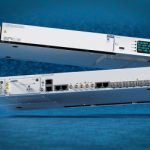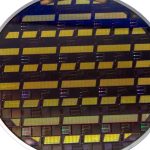Order-of-magnitude advances in inertial technology seem to take place roughly every 20 years, and the industry is poised at such a point now. New developments in photonic technology make high-performance inertial measurement accessible at lower size, weight and power. Many applications from driverless cars to UAVs can now take advantage of positioning that can independently bridge GPS outages from 2 minutes up to 10 minutes.
A free webinar on May 28, “Inertial Goes Photonic, Explodes Gyro Technology.” Register here now.
A recognized expert consultant will review the inertial landscape, explaining contemporary and emerging inertial Sensor technologies.
The focus narrows to the high-performance advantages now within reach for applications such as autonomous vehicles, which require centimeter-level precision for the duration of a few minutes, or navigation-grade performance regime of 0.01 ˚/hr. This area has been dominated by fiber optic gyros (FOGs), which until today were at a price too high to be used in conventional automobiles.
Higher Precision Closer within Reach
A new approach leverages silicon photonics to tackle this problem, providing a reliable, high-performance, scalable, smaller FOG to be used in these systems for autonomous and other challenging applications.
Silicon photonics uses optical interconnects to provide faster data transfer both between and within microchips. In addition, the optical rays can carry far more data than electrical conductors. Silicon photonic devices can be made using existing semiconductor fabrication techniques.
The Photonic Integrated Circuit (PIC) integrated aboard the new gyroscope at the core of this webinar takes advantage of Si3N4/SiO2 polarization maintaining waveguides, low-loss waveguide couplers and high polarization extinction ratio to demonstrate these top-tier performance specifications:
• Bias Instability: 0.02 ˚/hr
• Angle Random Walk: <0.01°/√Hz
• Scale Factor Temperature: <50 ppm
• Linearity Error: <50 ppm
• Bias temperature: ≤1.0 ˚/hr, 1σ
For the first time in decades, engineers have rewritten gyroscope C-SWAP limitations. Learn how this can benefit your application. Register here for the free webinar on May 28.
Speakers
Ralph Hopkins is a Distinguished Member of the Technical Staff and Group Leader in the Positioning Navigation and Timing (PNT) Division at Draper where he is responsible for the design and development of inertial instruments and sensors. Ralph has served as Technical Director of advanced inertial instrument development programs including strategic, navigation and tactical grade gyroscopes and accelerometers. He is an invited speaker for short course tutorials on inertial instruments and inertial technology and has presented internationally for the NATO Science Technology Organization sponsored lecture series and symposia on navigation technology. Ralph holds a BS and ME in Mechanical Engineering from Rensselaer Polytechnic Institute, an ME in Engineering Mechanics from Columbia University, and an MS in Engineering Management from The Gordon Institute of Tufts University.
Roger H. Ward is Director, FOG Product Development at KVH Industries, Inc. He has broad experience leading global development teams, programs/portfolios, and service solutions. He is known for building high performing teams to drive efficiency and results in commercial, defense, and international markets. Roger has directed product portfolio pipelines/funnel, roadmaps, and strategy for new product launches including KVH’s photonic integrated chip (PIC) effort resulting the ground-breaking PIC-based fiber optic gyro. He has an MBA from the University of Rhode Island and a BS in Mechanical Engineering from Clarkson University.
Skip Ashton is the VP of Product Development at KVH Industries, Inc. and is responsible for engineering development programs and delivery of product to market. He was previously Vice President of Software at Silicon Labs responsible for the company’s software and quality assurance teams for both MCU and wireless software and tools. He was the Technical Lead at Zigbee and Thread and was deeply involved in the development of Zigbee PRO and the Thread stacks as well as the application layers that were developed for these commonly used IoT devices. He studied at Georgia Tech and spent 5 years in the U.S. Navy Nuclear Program.






